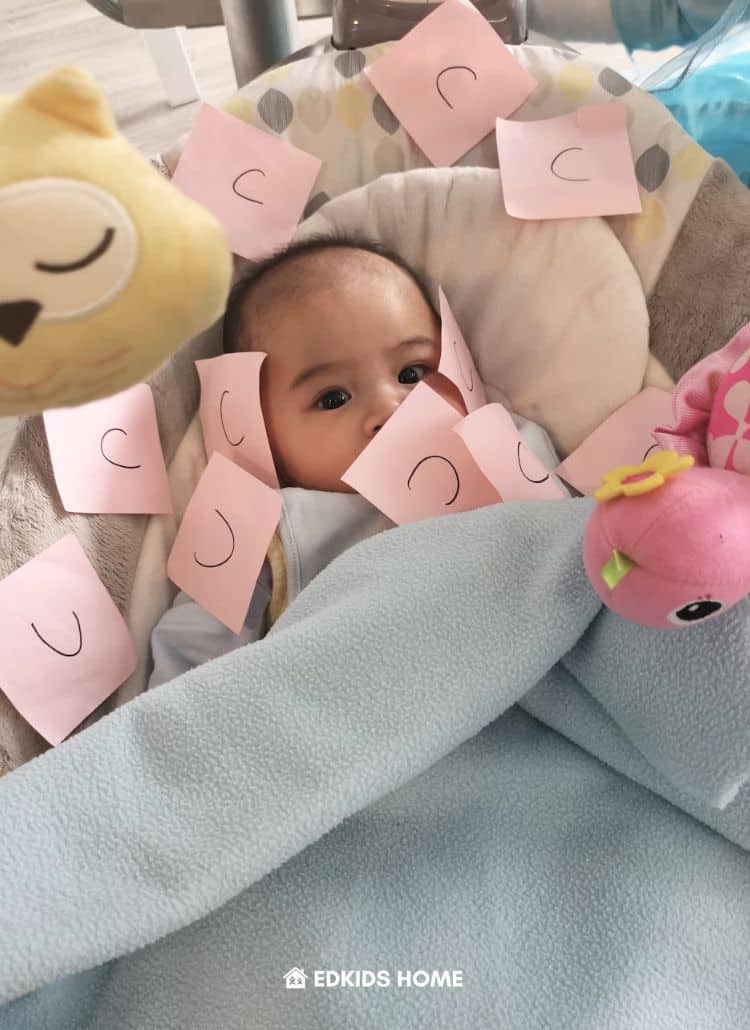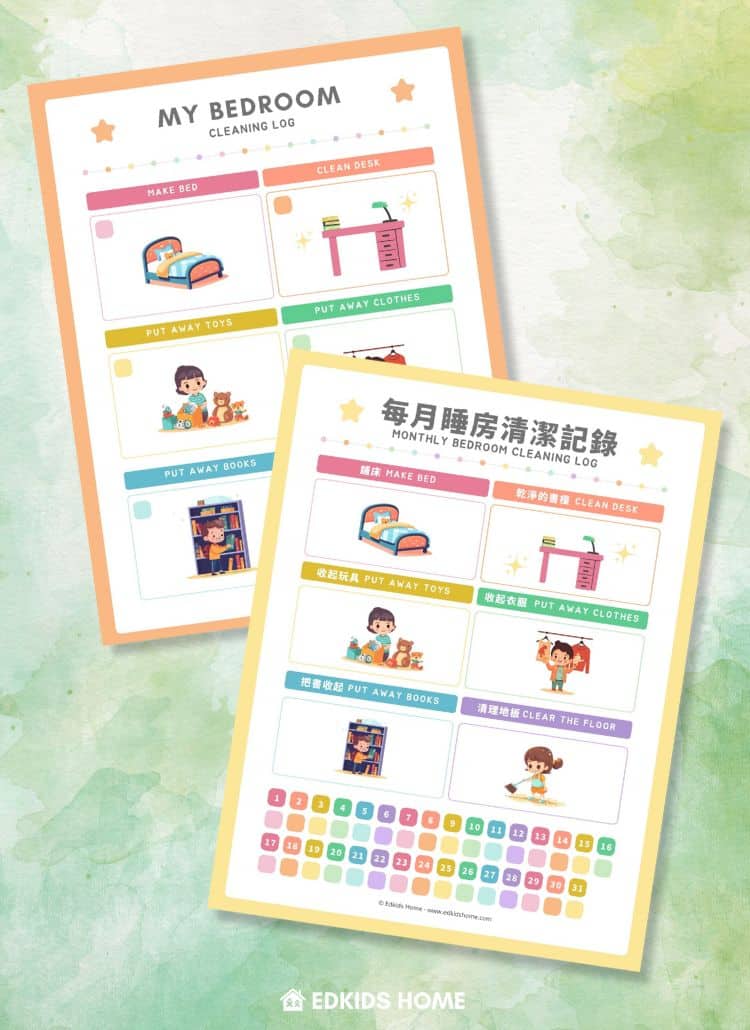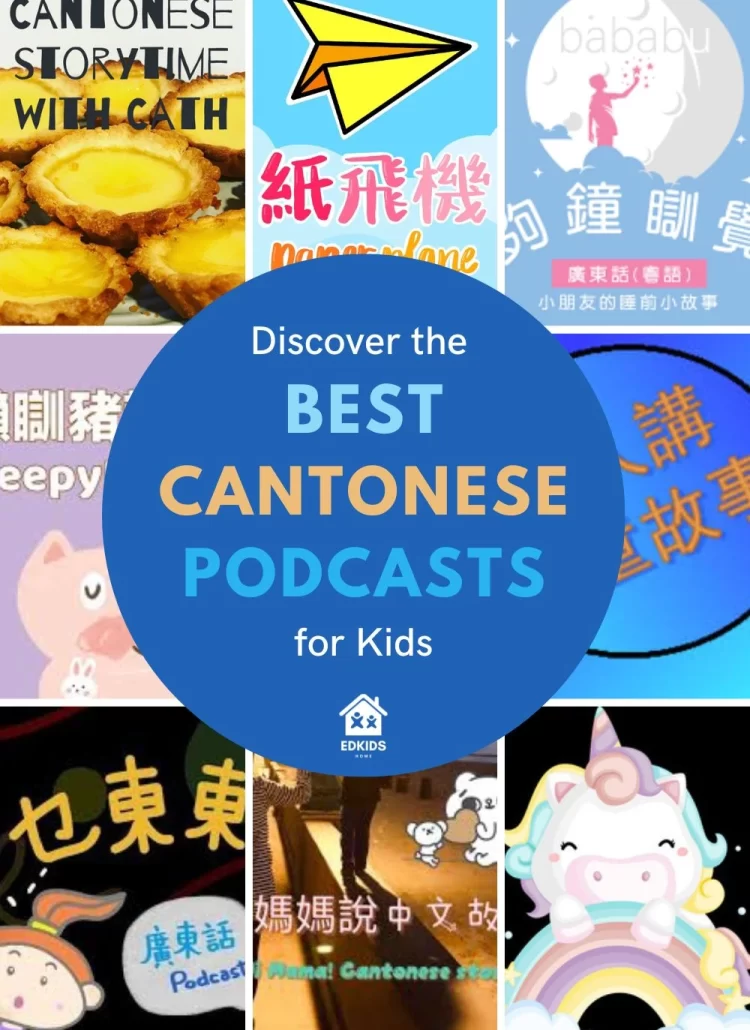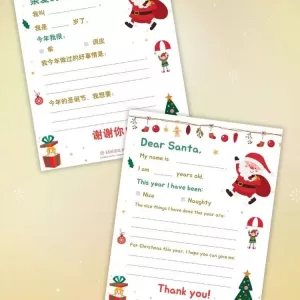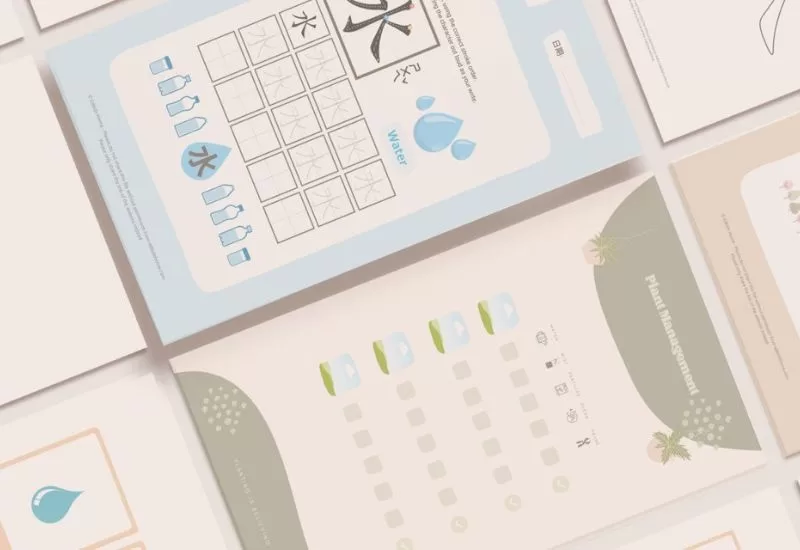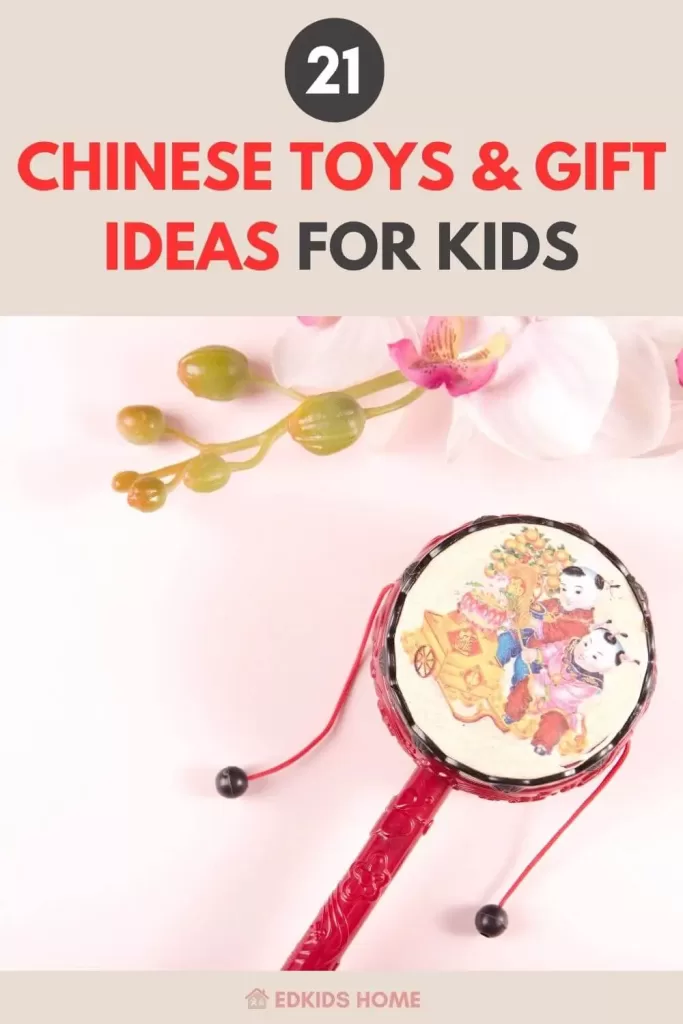
Hey there! As parents, we all want our kids to have the chance to explore and appreciate diverse cultures, right? But let's be real, it can sometimes be a real challenge to find activities that are both engaging and educational enough to grab their attention. Trust me, I've been there too! That's exactly why `we're here to assist. With our incredible selection of 21 traditional Chinese toys, you can easily introduce your little ones to the vibrant and rich Chinese culture while having an absolute blast!
Explore more cultivating Chinese Culture articles
- How to Travel with Kids in China to Cultivate Chinese Interest?
- 21 Tips to Teach Minority Languages & Motivate Your Kids
- 16 Best Podcasts for Kids in 2023: English and Chinese Options
My Childhood Experience with Chinese Traditional Toys
I have the most incredible memories of my own childhood in Hong Kong! Traditional Chinese toys held such a special place in our everyday playtime. Even now, I can vividly recall those after-school moments when my friends and I would gather with our beloved Chinese toys, immersing ourselves in hours of pure delight.
Let me tell you about two of my all-time favorite traditional Chinese toys: Chinese checkers (波子棋) and Aeroplane Chess (飛行棋). These strategy board games require players to plan their moves carefully while trying to outwit and capture their opponent's pieces. They're not only loads of fun but also a fantastic way for kids to develop critical thinking skills!
And then there's the shuttlecock (毽子). We used to keep it in the air using any body part except our hands, like a game of hacky sack. Imagine a group of us standing in a circle, eyes focused on the brightly colored shuttlecock, eagerly waiting our turn to deliver a clever kick that would send it soaring high. The thrill of the game wasn't just in the kicking, but also in the anticipation of where the shuttlecock (毽子) would land next!
Such wonderful memories remind us of the joy and togetherness that these traditional Chinese toys brought to our lives.
Discovering 21 Traditional Chinese Toys and Games: A Journey into Cultural Playtime
Growing up in Hong Kong as a child, I had the incredible opportunity to embrace the joy and wonder of traditional Chinese toys. These treasures, originating from ancient China, have undoubtedly withstood the test of time. They not only bring endless fun but also offer a captivating glimpse into the rich cultural heritage of China.
In this guide, let us embark on a delightful journey through 21 traditional Chinese toys that are guaranteed to captivate and engage your children. From charming games to intricate puzzles, these toys will not only entertain but also enlighten you.
So, without further ado, let's dive into this exciting adventure of discovery and play!
Games
Chinese culture is known for its strategic thinking and problem-solving skills, and it's no surprise that many traditional Chinese toys involve strategy and skill. These games are not only entertaining but also help develop critical thinking, hand-eye coordination, and motor skills.
1. Mahjong | 麻雀

麻將 [Traditional Chinese]
麻将 [Simplified Chinese]
má jiàng [Pinyin]
麻雀 [Cantonese]
maa4 zoek3 [Jyutping]
Age recommendation: 8+ years old
Description:
This tile-based game originated in the Qing dynasty and is still widely popular in Chinese households today. It requires players to use their strategic thinking to match tiles and form specific combinations.
Benefits:
- Develops critical thinking and problem-solving skills
- Enhances hand-eye coordination
- Promotes social interaction and cooperation among players
Our Story:
Mahjong is a game that holds a special place in my heart from when I was a kid. I remember the sound of the tiles clinking and clattering as my friends and I played in the afternoons. My grandma was really good at Mahjong and made it look so easy.
We played with my cousins, my sister, and our friends, and we all loved the game. Even now, just hearing the word Mahjong brings back happy memories. It's not just special to me, but it's also an important part of Chinese culture and a really cool traditional toy. Mahjong is warm and friendly, and it's something that everyone should treasure.
2. Big 2 | 鋤大弟
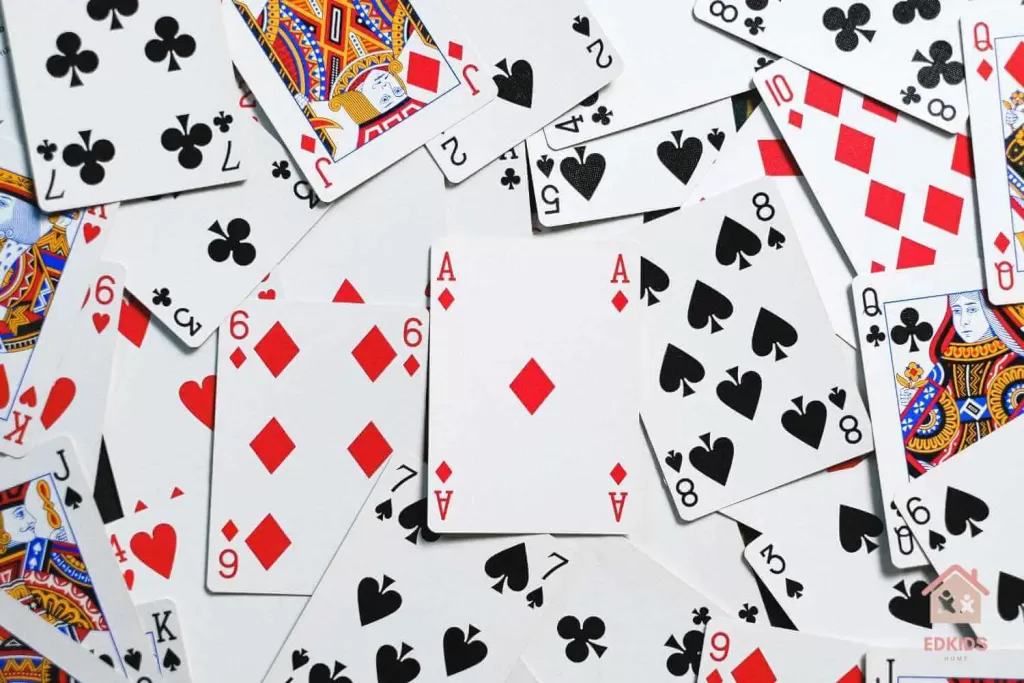
大老二 [Traditional Chinese]
大老二 [Simplified Chinese]
dà lǎo èr [Pinyin]
鋤大弟 [Cantonese]
co4 daai6 di2 [Jyutping]
Age recommendation: 10+ years old
Description:
Big 2, also known as Big Deuce (鋤大D/ 大老二), is a card game that originated in the Fujian province of China. It's now popular throughout Asia and has even made its way to Western countries. The objective of the game is to be the first player to get rid of all their cards.
Benefits:
- Enhances math skills through card counting and strategy
- Improves memory and focus while keeping track of cards played
- Encourages friendly competition among players
Our Story:
Big 2 holds a special place in my heart as the most significant Chinese game of my childhood. I can vividly recall my dad patiently teaching me the rules when I was around 7 years old, and from that moment on, I became deeply attached to this game. During lunchtime or recess, I would gather with my friends to play. Now, I have the pleasure of playing it again with my own children and my parents, creating new memories while cherishing the ones from the past.
It makes me happy to see my dad enjoying these moments, as we experience the joy and memories that Big 2 has given us throughout the years.
3. Aeroplane Chess | 飛行棋

飛行棋 [Traditional Chinese]
飞行棋 [Simplified Chinese]
fēi xíng qí [Pinyin]
fei1 hang4 kei4 [Jyutping]
Age recommendation: 4+ years old
Description:
Aeroplane Chess is a popular racing board game in China. It is an exciting board game for two to four players. Players use their own miniature airplanes as pieces and fly them across the board, attempting to capture each other's aircraft. The goal is to be the last one standing with planes intact. It's a great way for friends and family members to spend quality time together while honing their problem-solving skills.
Benefits:
- Improves critical thinking and decision-making skills
- Enhances strategic planning by predicting opponents' moves and making calculated risks
- Promotes teamwork and communication when playing in teams of two or more players
Our Story:
This is another game I used to play when I was a young child with my friends. Now, I also play it with my amazing kids, who are 6 and 3 years old. We enjoy playing together with their loving grandparents. We always have a blast!
Since my 3-year-old already knows how to count from 1 to 10, this game is perfect for him to practice and master his counting skills. It's incredibly entertaining to see the kids both cry and laugh at the same time. When their airplanes get kicked out and have to go back home, they cry. But when they get to kick someone else's airplane, they laugh with joy.
These precious moments bring back so many cherished memories. It's heartwarming to see all three generations bonding and spending quality time together with this board game.
4. Go | 圍棋
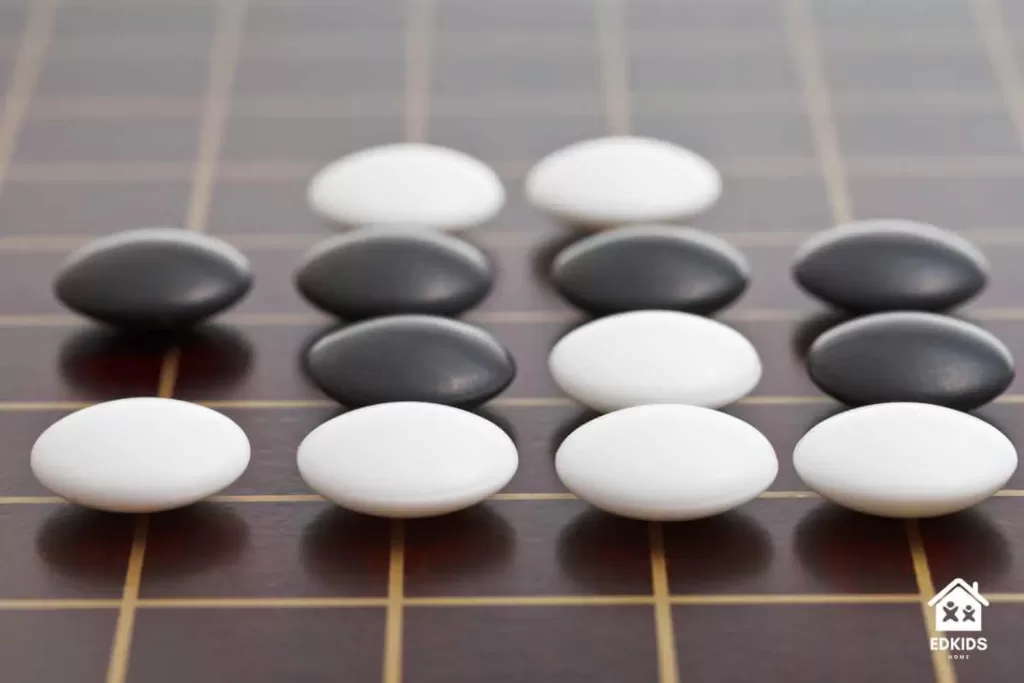
圍棋 [Traditional Chinese]
围棋 [Simplified Chinese]
wéi qí [Pinyin]
wai4 kei4 [Jyutping]
Age recommendation: 10+ years old
Description:
Go, also known as Weiqi (圍棋), is a strategic board game that originated in China over 2,500 years ago. It is considered one of the oldest board games still played today and has gained popularity worldwide.
Benefits:
- Improves critical thinking and problem-solving skills
- Enhances spatial awareness and concentration
- Promotes patience and perseverance through long, strategic games
Our Story:
I find Go to be a mysterious game. I don't know how to play it, but I often see it in Chinese ancient dramas, especially those set inside the Forbidden Kingdom. This makes me curious and makes me want to learn how to play. I imagine sitting with my kids, learning Go together, enjoying the challenge and the fun. It's not just a game, but also a way to pass on our cultural heritage. This game has a rich history and culture, and I really want to explore it with my kids.
5. Chinese Chess | 象棋

象棋 [Traditional Chinese]
象棋 [Simplified Chinese]
xiàng qí [Pinyin]
zoeng6 kei4 [Jyutping]
Age recommendation: 10+ years old
Description:
Chinese Chess, also known as Xiangqi (象棋), is a strategy board game that originated in China over 1,000 years ago. It is played on a board with 9 vertical lines and 10 horizontal lines, each representing different ranks and files of the army.
Story:
Chinese Chess is a game that has been passed down through generations in my family. My grandparents used to play it with their friends, and they would often teach my parents how to play when they were young. As I grew up, I would watch them playing Chinese Chess and would be fascinated by the moves and strategies they used.
Now, I am excited to pass on this traditional Chinese toy to my children. It not only teaches them strategy and critical thinking skills but also connects them to their cultural roots. Every time we play, it brings back fond memories of my grandparents and our shared love for this game.
I believe that learning how to play Chinese Chess is not only a fun pastime but also a valuable way to preserve and pass on our cultural heritage. It's an opportunity for the younger generation to connect with their ancestors and keep the traditions alive.
6. Chinese Checkers | 波子棋
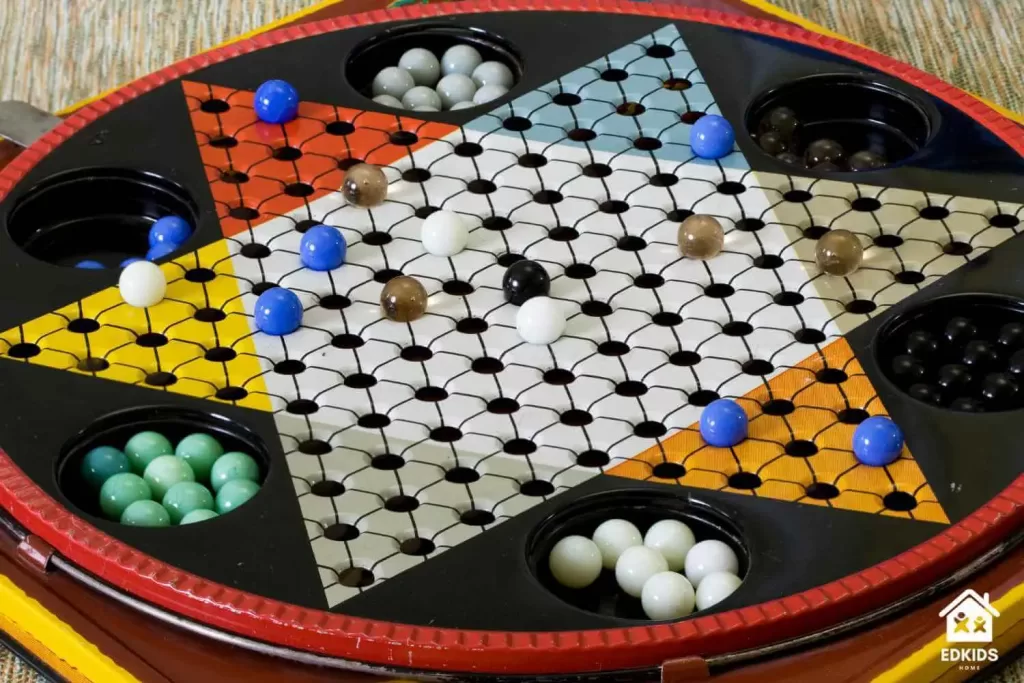
跳棋 [Traditional Chinese]
跳棋 [Simplified Chinese]
tiào qí [Pinyin]
波子棋 [Cantonese]
bo1 zi2 kei4*2 [Jyutping]
Age recommendation: 6+ years old
Description:
Chinese Checkers, also known as Tiaoqi (跳棋), is a strategy board game that can be played by either 2, 3, 4 or 6 players. The objective of the game is to move all your pieces from one side of the board to the opposite side, using a series of diagonal jumps over other pieces.
Our Story:
My in-laws got this amazing Chinese checkers game for the kids, and we all decided to play together. Sadly, the kids were still too young to join in at that time, so I ended up playing with my in-laws. But you know what? It was such a blast! It's incredible how even adults can enjoy this game. It's not just for the little ones – it's a fantastic way for adults to exercise their brainpower too!
Puzzles
Puzzles are not only great for keeping kids entertained but also help improve problem-solving skills and spatial awareness. Traditional Chinese puzzles are made with bamboo or wood, giving them a unique tactile experience.
7. Tangram | 七巧板

七巧板 [Traditional Chinese]
七巧板 [Simplified Chinese]
qī qiǎo bǎn [Pinyin]
cat1 cau2 baan2 [Jyutping]
Age recommendation: 3+ years old
Description:
Tangram is a traditional Chinese puzzle made of 7 pieces that can be arranged to form different shapes and figures. The beauty of Tangram lies in its simplicity and versatility. It's a game that cultivates spatial awareness, creativity, and problem-solving skills, all while keeping things fun and engaging! It originated during the Song Dynasty and is still popular today.
Benefits:
- Improves spatial awareness and visual perception
- Develops critical thinking skills
- Enhances creativity and imagination
Our Story
My kids received a special gift from their Aunt in Hong Kong – a Tangram beautifully wrapped in a lovely box. We were initially unsure of its purpose until I started researching. I discovered some amazing templates, which I printed out and organized in a folder. This allowed my kids to take their time and think creatively while fitting the pieces together to form different pictures. It's been such a delightful and engaging experience for all of us!
8. Kongming Lock | 孔明鎖
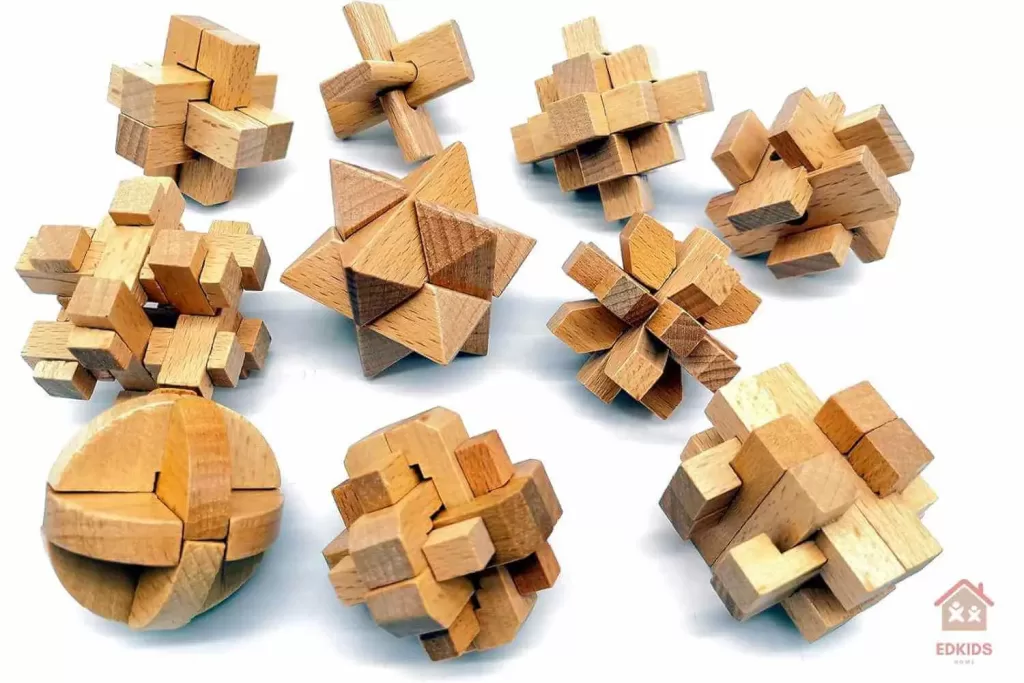
孔明鎖 [Traditional Chinese]
孔明锁 [Simplified Chinese]
kǒng míng suǒ [Pinyin]
hung2 ming4 so2 [Jyutping]
Age recommendation: 6+ years old
Description:
The Kongming Lock, also known as the Chinese Brain Teaser, is a traditional toy that originated in China during the Ming Dynasty. It's made of wooden blocks attached together with ropes or metal rings. The goal is to disassemble and reassemble the blocks without breaking them.
Benefits:
- Develops fine motor skills
- Encourages patience and perseverance
- Enhances problem-solving skills
Arts and Crafts
Traditional Chinese toys also include various arts and crafts that allow kids to express their creativity while learning about Chinese culture.
9. Chinese Shadow Puppets | 皮影戲
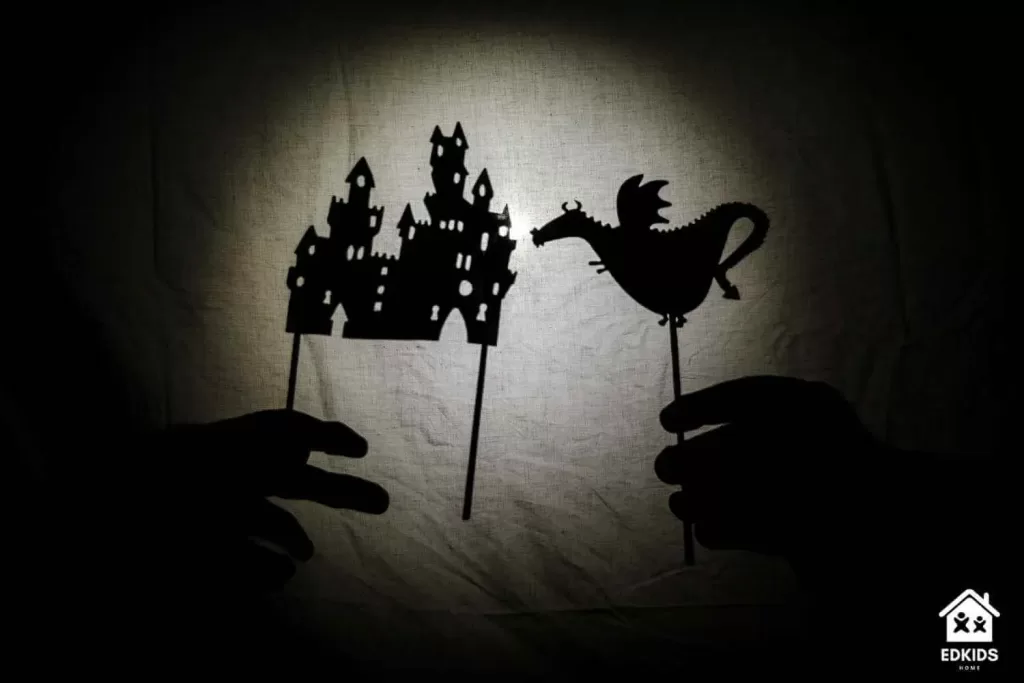
皮影戲 [Traditional Chinese]
皮影戏 [Simplified Chinese]
pí yǐng xì [Pinyin]
pei4 jeng2 hei3 [Jyutping]
Age recommendation: all ages
Description:
Shadow puppetry is an incredible folk art form and a cherished traditional toy in China. Longdong Shadow Puppetry, originating in the beautiful Northwest province of Gansu, holds a special place in the hearts of Pingliang and Qingyang counties, as well as the surrounding triangular area bordering Shaanxi and Ningxia to the east. This captivating form of shadow play flourished during the Ming and Qing Dynasties (14th to 19th century), winning the hearts of many with its elegant and generous figures. The outlines are straight and broad, adding to the allure of this enchanting art.
Benefits:
- Encourages imaginative play
- Develops storytelling skills
- Introduces cultural heritage
10. Chinese Knotting | 中國結
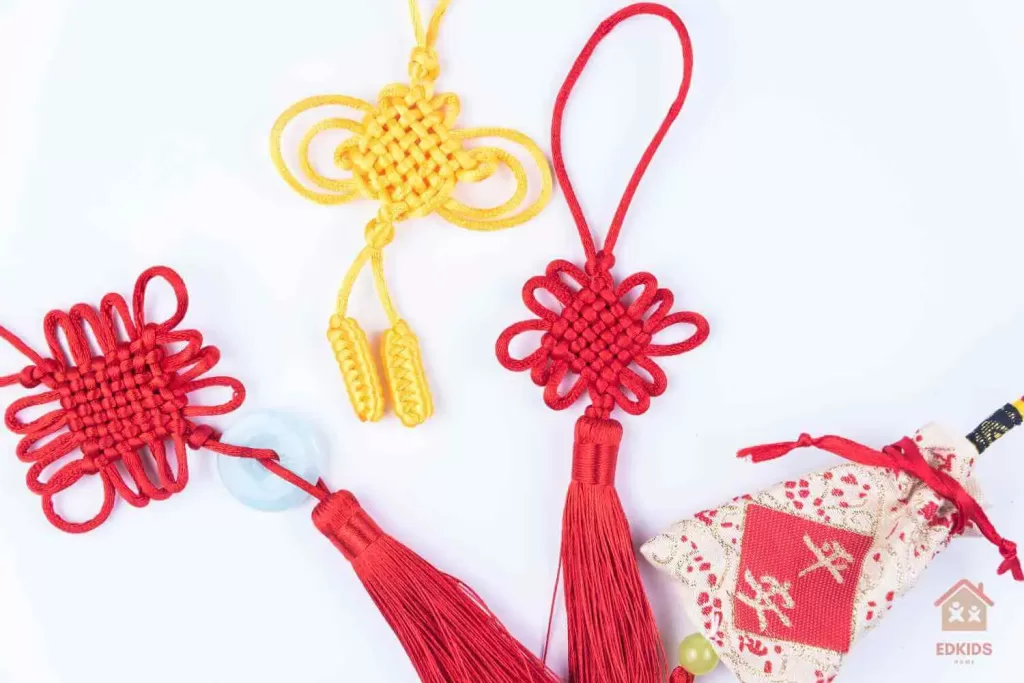
中國結 [Traditional Chinese]
中国结 [Simplified Chinese]
zhōng guó jié [Pinyin]
zung1 gwok3 git3 [Jyutping]
Age recommendation: all ages
Description:
Chinese knotting (中國結), is a traditional decorative art form that uses silk or cotton ropes to create intricate and beautiful designs. It's often used for decorations, accessories, and even functional items like buttons or bookmarks.
Benefits:
- Improves fine motor skills
- Cultivates patience and focus
- Introduces cultural art form
Musical Instruments
Music plays a significant role in Chinese culture, and there are various traditional musical instruments that kids can learn to play.
Related: 9 Reasons Music is Important for Children and Development
11. Guqin | 古琴
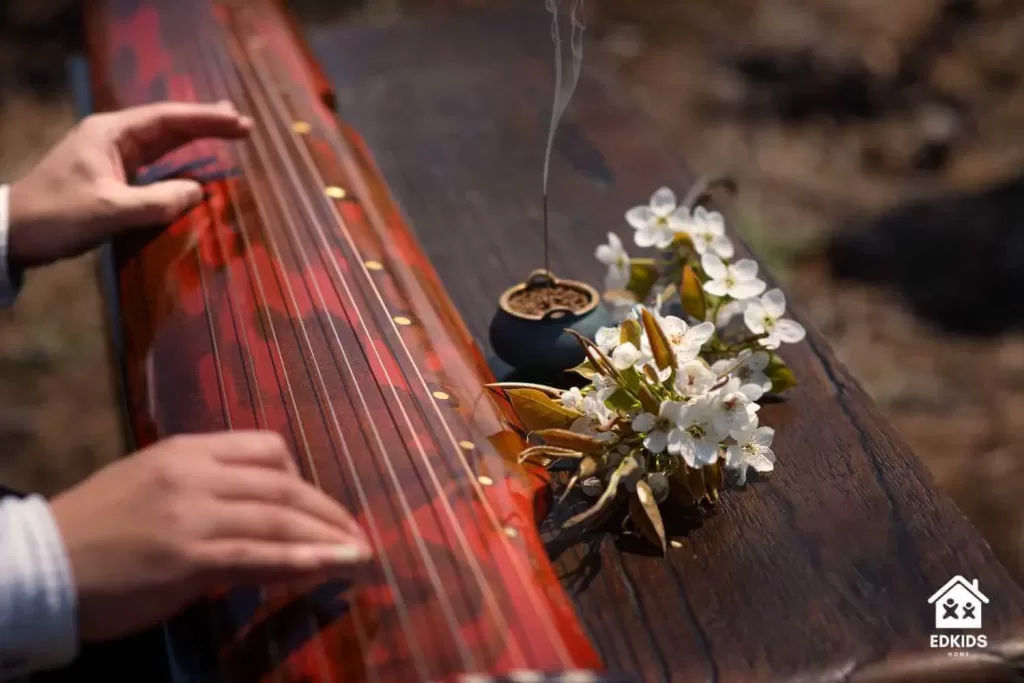
古琴 [Traditional Chinese]
古琴 [Simplified Chinese]
gǔ qín [Pinyin]
gu2 kum4 [Jyutping]
Age recommendation: 10+ years old
Description:
The guqin is a seven-stringed zither that has been played in China for over 3,000 years. It's known as one of the most refined and elegant musical instruments in Chinese history and is often associated with scholars and intellectuals.
Benefits:
- Develops hand-eye coordination
- Enhances creativity and self-expression
- Introduces cultural music heritage
12. Rattle-drum | Chinese Rattle | 拨浪鼓
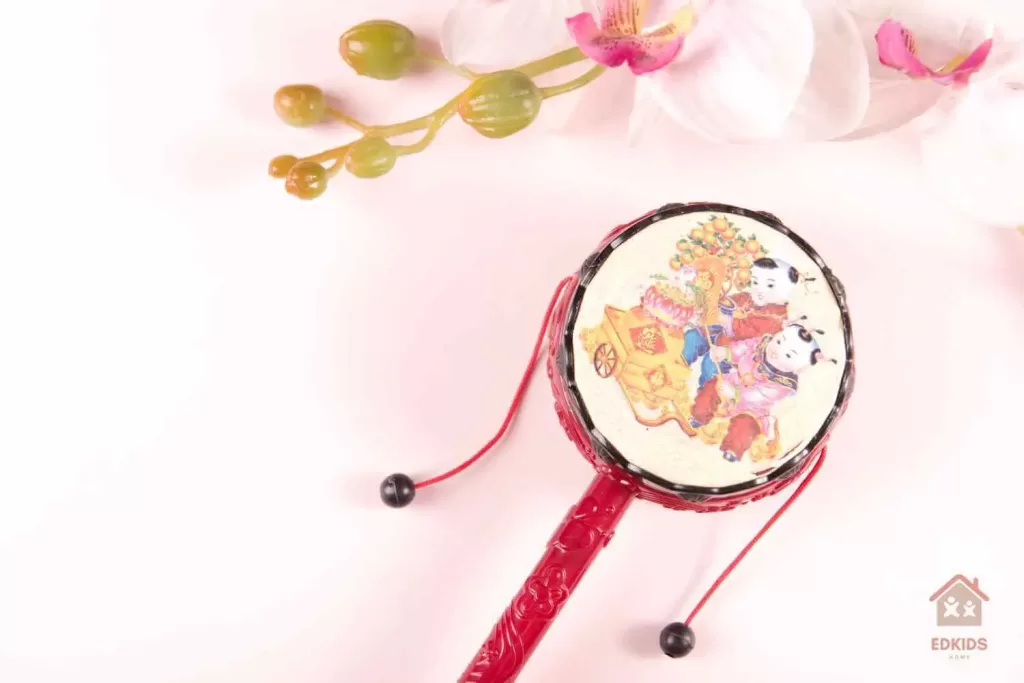
拨浪鼓 [Traditional Chinese]
拨浪鼓 [Simplified Chinese]
bō làng gǔ [Pinyin]
bok6 long6 gu2 [Jyutping]
Age recommendation: 1+ years old
Description:
The rattle-drum is a traditional Chinese toy that consists of two small drums connected by a string. When the drum is rotated, the beads inside create a rhythmic sound similar to waves crashing against the shore.
Benefits:
- Encourages rhythm and coordination
- Improves hand-eye coordination
- Introduces traditional Chinese music and toys
Our Story:
My children received a traditional Chinese toy, a rattle-drum, from their great-grandmother. They were captivated and started playing with it. Mastering the rattle-drum took time, but they were determined. Eventually, they got the hang of it and filled our home with rhythmic sounds of Chinese tradition.
Physical Activities
In addition to the mental and artistic benefits, traditional Chinese toys also offer physical activities that can help kids stay active and healthy.
13. Shuttlecock | 毽子

毽子 [Traditional Chinese]
毽子 [Simplified Chinese]
jiàn zi [Pinyin]
gin6 zi2 [Jyutping]
Age recommendation: 3+ years old
Description:
Jianzi is a traditional Chinese game that involves kicking a feathered shuttlecock with your feet and trying to keep it in the air. It's similar to Hacky Sack but with more acrobatic moves involved. Jianzi is popular in China, and there are even professional teams that compete in tournaments.
Benefits:
- Improves balance and coordination
- Enhances leg strength and flexibility
- Promotes teamwork and communication
Our Story
I have fond memories of my childhood in Hong Kong, where my friends and I would gather in a circle and kick around a shuttlecock, trying our best to keep it up. I wasn't very skilled at the game, but it brought us so much joy and entertainment outdoors. It was a wonderful and inclusive activity that we all enjoyed together.
14. Chinese Yo-Yo |Diabolo | 扯鈴
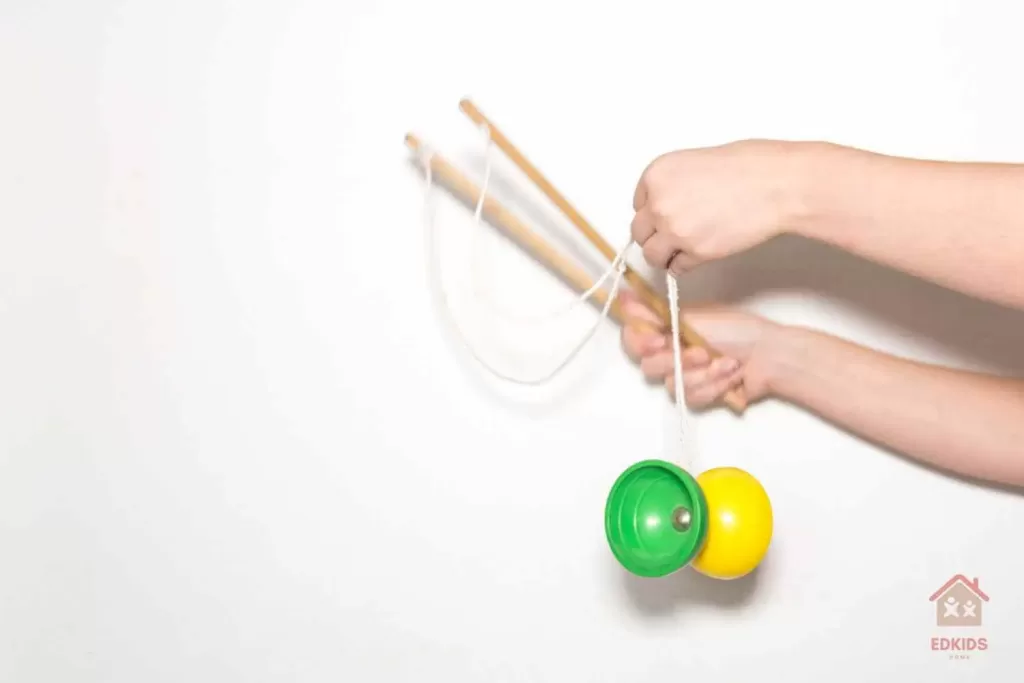
扯鈴 [Traditional Chinese]
扯铃 [Simplified Chinese]
chě líng [Pinyin]
ce2 ling4 [Jyutping]
Age recommendation: 5+ years old
Description:
The Chinese yo-yo, also known as diabolo, is a traditional toy that originated in China over 2,000 years ago. It consists of two sticks connected by a string with a spool-like object in the middle. By spinning and manipulating the sticks, the player can perform various tricks and stunts with the diabolo.
Benefits:
- Enhances hand-eye coordination
- Develops fine motor skills
- Improves focus and concentration
15. Chinese Kites | 風箏
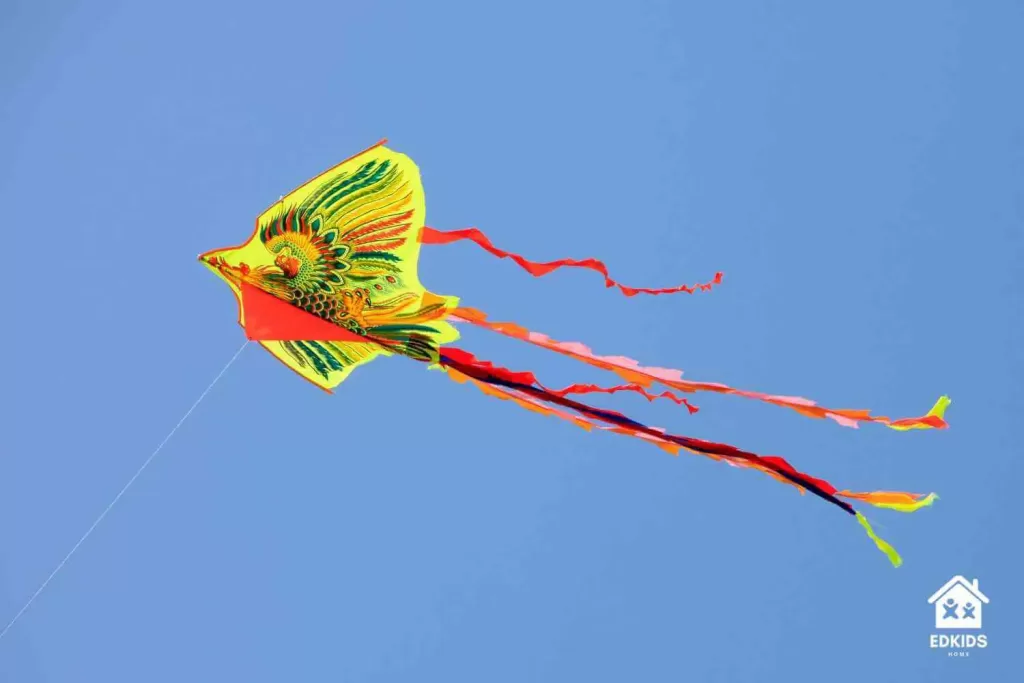
風箏 [Traditional Chinese]
风筝 [Simplified Chinese]
fēng zhēng [Pinyin]
紙鷂 [Cantonese]
zi2 jiu6*2 [Jyutping]
Age recommendation: all ages
Description:
Chinese kites are not your average store-bought kite. These traditional kites are handmade with bamboo frames and silk or paper coverings. They come in various shapes and sizes, from the classic diamond shape to intricate designs such as dragons, butterflies, and birds.
Benefits:
- Encourages outdoor play and physical activity
- Develops teamwork and communication skills
- Sparks creativity and imagination
Our Story
Growing up in Hong Kong, we were truly fortunate to have an abundance of wind, perfect for flying kites. One of our most cherished pastimes involved taking our beautifully crafted Chinese kites to the mountains. These outings were always a special occasion, with our extended family eagerly joining in the fun. The excitement of watching our kites gracefully soar high above, their vibrant colors dancing in the breeze, brought endless joy. This activity went beyond mere play; it fostered a deep connection with nature, our culture, and one another.
16. Lanterns | 燈籠
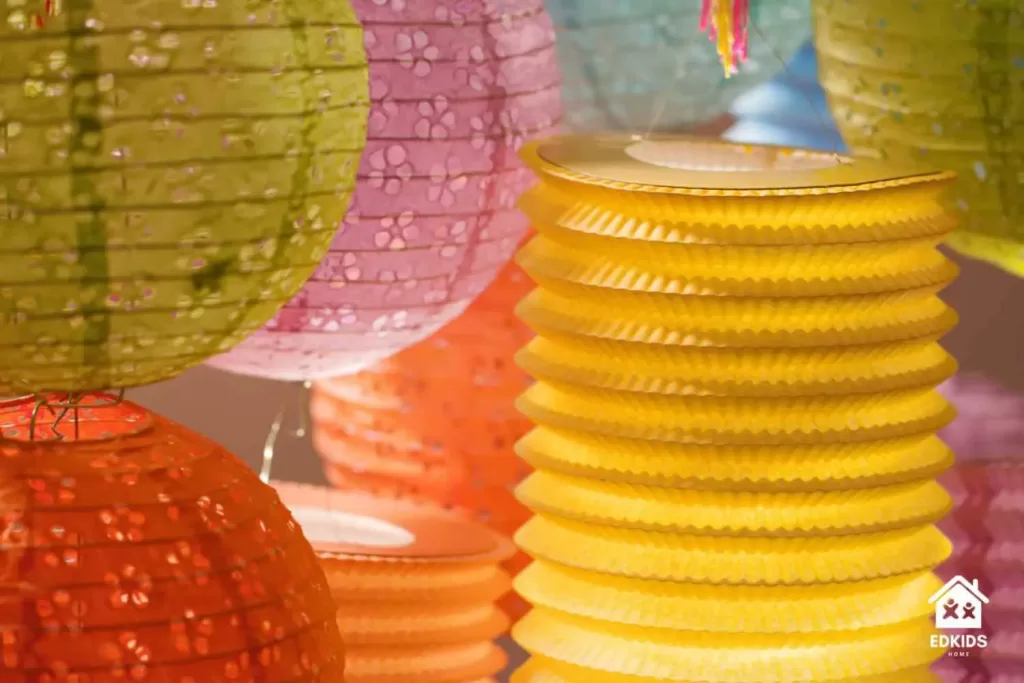
燈籠 [Traditional Chinese]
灯笼 [Simplified Chinese]
dēng lóng [Pinyin]
dang1 long4 [Jyutping]
Age recommendation: all ages
Description:
Lanterns are an essential part of Chinese culture, used for both practical and decorative purposes. Made from paper or silk, they come in various shapes and sizes and can be lit with candles or electric bulbs. Lantern festivals are a popular tradition in China, where thousands of lanterns are displayed to celebrate special occasions.
Benefits:
- Encourages creativity and self-expression
- Enhances spatial awareness and visual tracking skills
- Promotes relaxation and stress relief
Our Story
The Mid-Autumn festival was special. We played with paper lanterns and our parents lit candles inside. We walked, mesmerized by the soft glow and enchanting shadows. Sometimes, the lanterns caught fire, adding a bittersweet touch.
However, as time passed, lanterns evolved. Today, safer plastic lanterns with small light bulbs have replaced the traditional paper ones. The flame may be gone, but the magic and cherished memories endure, passed on to a new generation. Join us in celebrating the timeless beauty of this tradition!
17. Badminton | 羽毛球

羽毛球 [Traditional Chinese]
羽毛球 [Simplified Chinese]
yǔ máo qiú [Pinyin]
jyu5 mou4 kau4 [Jyutping]
Age recommendation: 5+ years old
Description:
Badminton is a popular traditional Chinese sport that involves hitting a shuttlecock with a racket over a high net. It can be played indoors or outdoors and requires speed, agility, and hand-eye coordination. Badminton has been an official Olympic sport since 1992.
Benefits:
- Improves physical fitness and coordination
- Enhances cognitive skills such as strategy and decision-making
- Promotes teamwork and social interaction
Our Story
As kids, we would gather in the park to play badminton. It was a thrilling game that required quick reflexes and strategic planning. We learned to work together as a team, communicating through hand signals and cheering each other on. Badminton was not just a game, but a way to bond with friends and family.
18. Ping Pong | 乒乓
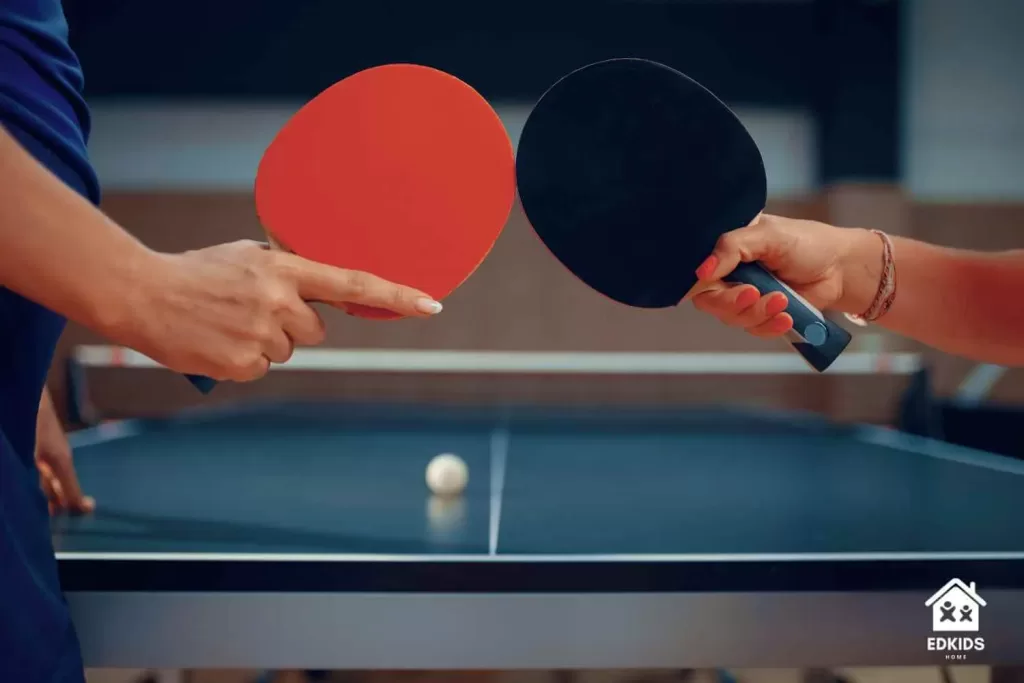
乒乓 [Traditional Chinese]
乒乓 [Simplified Chinese]
pīng pāng [Pinyin]
ping4 pong1 [Jyutping]
Age recommendation: 6+ years old
Description:
Ping Pong, also known as table tennis, is another popular traditional Chinese sport. It involves hitting a lightweight ball with small paddles over a low net on a table divided into two halves. Ping pong has been an Olympic sport since 1988 and requires speed, agility, and hand-eye coordination.
Benefits:
- Improves motor skills and hand-eye coordination
- Enhances cognitive skills such as focus and decision-making
- Promotes social interaction and friendly competition
Our Story
We used to have a ping pong table in our basement, and those memories are so special. We would always gather downstairs to play ping pong, and even if my siblings weren't around, I would challenge myself by leveling up one side of the table and playing solo. It was so much fun!
19. Chinese Jump Rope

跳皮筋 [Traditional Chinese]
跳皮筋 [Simplified Chinese]
tiào pí jīn [Pinyin]
跳繩 [Cantonese]
tiu3 sing4*2 [Jyutping]
Age recommendation: 6+ years old
Description:
Chinese jump rope, also known as elastics or French skipping, is a traditional Chinese playground game that involves jumping and dancing over an elastic rope held between two people's ankles. This fun and challenging game requires coordination, rhythm, and teamwork.
Benefits:
- Improves balance and coordination
- Increases cardiovascular endurance
- Encourages creativity and imagination through dance moves and routines
Our Story
We played Chinese jump rope every day during recess in Hong Kong. We would take turns holding the elastic ropes, and coming up with new dance moves and patterns to challenge each other. It was a great way to stay active while having fun with friends. Even now, I still remember some of the moves we used to do and can't help but smile when I think about those memories.
More Toys and Gift Guides for Kids:
If you're looking for holiday gifts, come and explore our educational gift guides! We have something for everyone, so join us and find the perfect gift for your loved ones!
- 7 Essential Montessori Math Materials Your 3 to 4-Year-Old Will Love and Thrive On
- 8 Best Math Toys to Help Your Child Love Learning
- 28 Educational Toys That 2 to 3-Year-Olds Will Love
- Lovevery Play Kits: What You Need To Know (Complete Review)
- Chinese Learning Resources Created by Moms – Mama Baby Mandarin
Last Thing About 21 Traditional Chinese Toys and Games
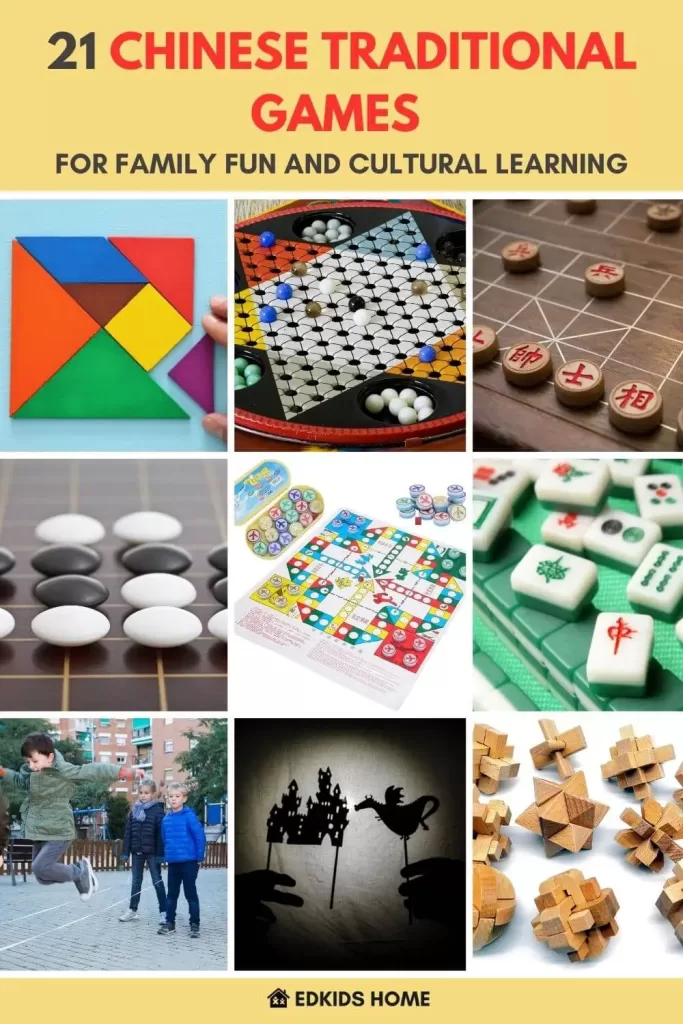
Playing with traditional Chinese toys is not only fun for kids, but also an opportunity to explore Chinese culture. These toys have a rich history and offer various benefits like improving coordination, fostering teamwork, and sparking creativity and imagination. By introducing these toys to your children, you can contribute to their overall development and cultivate an interest in Chinese culture. What are your favorite Traditional Chinese Toys? Please share in the comments section!
